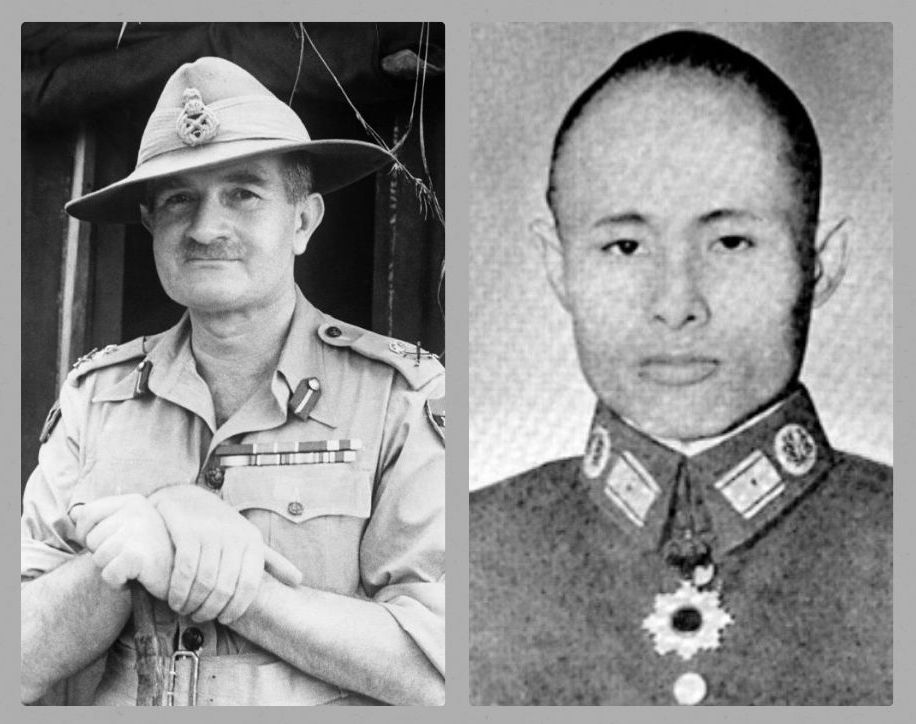
15 May 1945
Relationship Between Lt. General Slim and General Aung San
people William Slim General Aung San
General Aung San crossed the Irrawaddy at Allanmyo on 15 May 1945 and then flew to Meiktila on 16 May to meet for the first time with Lt. General William Slim, commander of the British Fourteenth Army. With nearly one million men, the Fourteenth Army was the largest Commonwealth army anywhere during World War Two - a giant force of Indians, Africans, British, Gurkhas, Burmese, Canadians, Australians and others. By 16 May, the Fourteenth Army had already retaken Rangoon and General Slim would soon be promoted to commander of Allied Land Forces South East Asia under the Supreme Allied Commander Lord Louis Mountbatten.
Burma was then in terrible shape, with its cities and infrastructure destroyed, and major food shortages leading to famine-like conditions in many areas. As head of the Burma National Army, General Aung San asked to be recognised as an Allied Commander. His request was refused and General Slim told him that the Fourteenth Army was "destroying the Japanese quite nicely" already. General Slim instead proposed that he be treated as a subordinate commander with his troops rationed by the Fourteenth Army where possible and reporting to the nearest British commanding officer. In this position, the BNA would help fight dacoits and "deal drastically" with remaining pockets of Japanese.
General Slim was very impressed by the much younger General Aung San (who appeared in the near-uniform of a Japanese officer, much to the surprise of the British staff officers who had not been forewarned). He found him intelligent and straight-forward. He said to him: "Go on Aung San, you only come to us because we are winning!" To which General Aung San replied simply: "Well it wouldn't be much good coming to you if you weren't, would it?". With this exchange, the relationship between the reoccupying British power and General Aung San was sealed, creating the dynamics that would ultimately lead to the London agreement 19 months later. In January 1947, talks in London between the UK government of Prime Minister Clement Attlee and a visiting Burmese delegation led by Aung San resulted in the “Aung San-Attlee Agreement”, which agreed to the terms for a “free and independent Burma”.